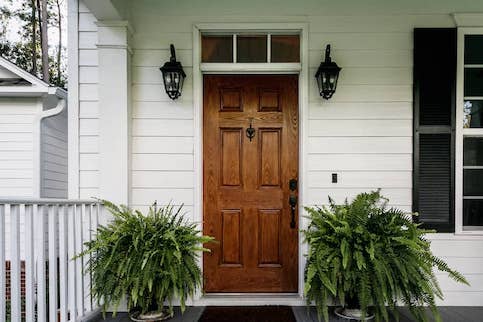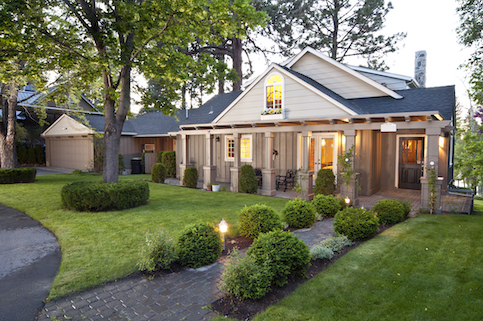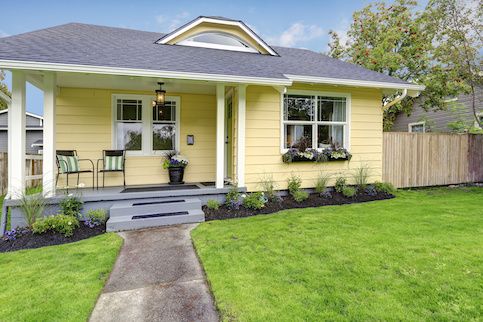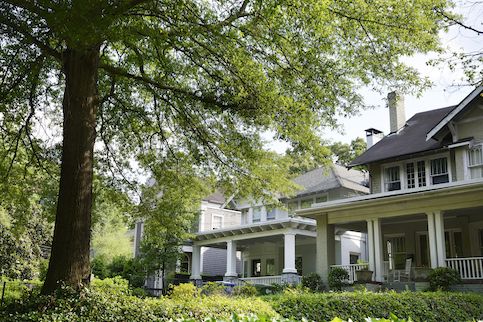What Is A No-Closing-Cost Mortgage In Real Estate?
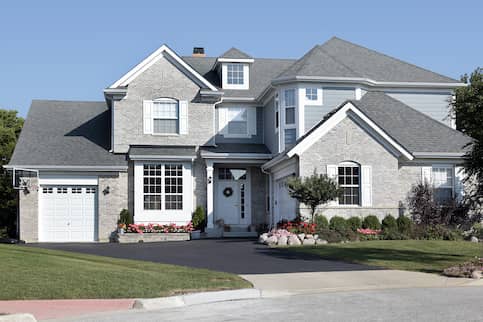
Imagine standing at the threshold of your dream house, ready to step into the next chapter of your life: homeownership. However, a mountain of costs lurks behind this exciting milestone, creating an imposing barrier.
Closing costs are a set of fees due when you close on a house, adding a layer of complexity and financial strain. Fortunately, a no-closing-cost mortgage lets you pay your closing costs along with your mortgage. Here’s how it impacts your overall loan cost and your options for deferring closing costs.
Mortgage Closing Costs Overview
Closing costs are the fees home buyers pay when purchasing a house. These fees usually add up to 3% to 6% of the home’s purchase price. The range in costs exists because the location, type of property and negotiations with the seller affect what the buyer will pay.
Remember, closing costs are in addition to the home purchase price and the down payment. For this reason, it’s crucial for buyers to budget for these costs. Here are some common types:
- Loan origination fees: Lenders charge a fee for processing and underwriting the loan.
- Property taxes: Buying a home means taking over the responsibility of property taxes. Buyers usually owe the property taxes due from closing day to the end of the calendar year.
- Appraisal fees: Lenders require a professional appraisal to determine the property’s fair market value. The buyer typically pays for this service.
- Title search and title insurance: Title insurance protects the buyer and the lender against any issues with the property’s title, such as liens or disputes. Likewise, paying a title search company helps inform the buyer about potential issues with taking ownership of the home.
- Recording fees: Buying a home necessitates the official recording of the sale with the local government.
- Homeowners and specialized insurance: If you live in a risk area for certain natural disasters, your lender may require insurance policies in addition to typical homeowners coverage all buyers must purchase. For instance, you might need to purchase a flood insurance policy before closing.
- Escrow fees: Escrow services facilitate the transfer of funds and documents between the buyer, seller and other parties involved in the transaction.
- Attorney fees: Some states require buyers to hire an attorney to oversee the home sale. So, attorney fees are part of closing costs if you need or want one for the transaction.
- Lender fees: Lenders might charge you for the costs of pulling your credit, performing wire transfers, etc. These fees vary by lender.
- Private mortgage insurance (PMI): Buyers with a conventional mortgage and a down payment of less than 20% of the home’s purchase price pay PMI. The lender charges this insurance fee to protect it from the risk of buyers defaulting on their loans.
- Fees for government-backed loans: Government-backed loans, such as FHA loans and VA loans, have unique fees, such as mortgage insurance premiums (MIP) and funding fees.
Closing costs paid by the seller are known as concessions. However, concessions are rare in seller-friendly real estate markets because buyers compete over a limited housing supply and want to make their offers profitable and convenient for sellers.
See What You Qualify For
Home Purchase
Home Refinance
Tap Into Equity
What Is A No-Closing-Cost Mortgage?
A no-closing-cost mortgage means the borrower does not pay closing costs on closing day. Instead of these costs being due at the time of the home sale, the borrower rolls these costs into the mortgage. For instance, say the mortgage is $300,000 and the closing costs are $9,000. If the buyer can’t afford the closing costs, the lender can pay them instead through a no-closing cost mortgage. The lender bears these costs and charges a higher interest rate on the mortgage to recover the amount over time. So, the borrower ends up paying the $9,000 over the life of the loan through higher interest payments.
As a result, a no-closing-cost mortgage doesn’t mean the buyer opts out of paying the closing costs. This option allows the buyer to pay them gradually as part of the mortgage loan (with interest). So, no matter what type of loan the borrower chooses, they’ll still have to pay closing costs.
How Does A Mortgage With No Closing Costs Work?
A no-closing-cost mortgage allows the borrower to avoid making an upfront payment for the closing costs when purchasing the home. The lender adds these costs to the mortgage, increasing the loan’s interest rate and monthly payment.
While this approach provides short-term financial relief by reducing immediate out-of-pocket expenses, it has long-term implications. Rolling closing costs into the loan means that the borrower will pay off these costs gradually over the life of the mortgage.
In essence, by choosing a no-closing-cost mortgage, the buyer defers the payment of closing costs and pays for them over time with interest. Having to pay interest on these costs makes them more expensive than if you paid upfront. Rolling the costs into the mortgage contrasts with the more typical method of paying closing costs upfront, where the immediate financial burden is higher, but the overall cost of the loan, including interest, is likely to be lower in the long run.
The Pros And Cons Of A No-Closing-Cost Mortgage
A no-closing-cost mortgage as a borrower has both benefits and drawbacks for borrowers. Here’s a summary of both to help you understand whether rolling closing costs into your home loan is best for your situation.
Pros Of No-Closing-Cost Loans
These are the advantages that come with a no-closing cost mortgage:
- More money to put toward a down payment: A down payment is usually a nonnegotiable part of the loan. For instance, you’ll need at least a 3% down payment as a first-time home buyer with a conventional loan. Getting a no-closing-cost mortgage could help free up the funds needed for this expense.
- The possibility of buying a home sooner: Prospective buyers might have to wait months or years to save enough money to afford closing costs. A no-closing-cost loan lowers the barrier for borrowers with fewer financial resources.
- More cash to spend or save: Whether you need more for a down payment, renovations or other life expenses, a no-closing-cost mortgage leaves you with more cash in your pocket upon buying the home.
- Potential to avoid some closing costs: If you plan to stay in the home for less than 5 years, you can put off the closing costs without bearing the higher interest and steeper monthly payments for the life of the loan. In other words, if you offload the mortgage by selling the home within 5 years or less, a no-closing-cost mortgage can save you money. Remember, you will pay those costs (with interest) in your monthly payment until you sell the home, so you won’t avoid all costs.
Cons Of No-Closing-Cost Loans
Here are the pitfalls of no-closing-cost mortgages to remember:
- Less home equity: A no-closing-cost mortgage slows the process of building equity because more of your monthly payment goes toward interest than the principal. The reduced equity hinders your ability to build wealth through home appreciation and limits the financial flexibility for future transactions, such as refinancing or selling the property.
- A higher interest rate: Lenders compensate for covering the closing costs by charging a higher interest rate on the loan. While this alleviates the upfront financial strain, borrowers will pay more in total interest than a traditional mortgage.
- A larger monthly payment: A higher interest rate means a larger monthly payment, making a no-closing-cost mortgage less affordable.
- Higher costs for staying in the home: If you stay in the home for an extended period, you’ll pay more of the higher interest rate and larger monthly payments. So, if you plan to stay in the home for more than a few years, the cost of the loan outweighs the initial benefit of avoiding upfront closing costs.
Alternatives To No-Closing-Cost Mortgage Loans
If you need help with closing costs but don’t want a no-closing-cost mortgage, there may be a few alternatives available to you. Just keep in mind that not all lenders accept all forms of DPA. Make sure to speak to your lender to learn more.
Down Payment Assistance Programs
Down payment assistance programs are aid packages from governments, nonprofits and lenders to help mortgage borrowers afford their down payments and closing costs. Assistance can come in the form of grants and low-cost loans.
First-Time Home Buyer Assistance Programs
First-time home buyer assistance programs help borrowers who haven’t owned a home or been homeowners for the last 3 years. Governments and nonprofits offer these programs, usually pairing homeowner education with financial aid. You’ll receive money in the form of a grant, a second mortgage with 0% interest or a forgivable loan.
No-Closing-Cost Mortgage FAQs
If you need concise answers about no-closing-cost mortgages, this section addresses common questions about them.
Should I pay closing costs or roll them into my mortgage loan?
If you can afford the closing costs upfront and plan to stay in the home for more than 5 years, paying upfront may save you money in the long run. However, if immediate financial relief is a priority or you plan to sell within a few years, a no-closing-cost mortgage is a more suitable option, even though it comes with higher long-term costs.
Can I refinance my mortgage with no closing costs?
If you want to refinance your mortgage to get a lower interest rate or extend your loan term, you can refinance without paying closing costs upfront. Just like a no-closing-cost mortgage is an option for borrowers, homeowners can use a no-closing-cost refinance to get a new mortgage with more favorable terms and roll the closing costs into the mortgage.
Who offers no-closing-cost mortgages?
You can obtain a no-closing-cost mortgage from many lenders in the mortgage industry. You may need to shop around to find out which lenders may allow you to roll closing costs into the mortgage. Remember, qualifying for any mortgage means having an adequate credit history and debt-to-income ratio when you apply.
The Bottom Line
A no-closing-cost mortgage allows borrowers to defer upfront closing costs by rolling them into the loan amount, paid gradually through higher interest rates over the life of the loan. While it provides short-term financial relief and may be suitable for those planning to sell or refinance within a few years, it has long-term drawbacks, including slower home equity growth and higher overall costs due to increased interest. Alternatives like down payment assistance programs and first-time home buyer programs exist for those seeking financial may help with closing costs without opting for a no-closing-cost mortgage.
Choosing a no-closing-cost mortgage or a traditional loan depends on the borrower’s circumstances and priorities.
Get matched with a lender that will work for your financial situation.
